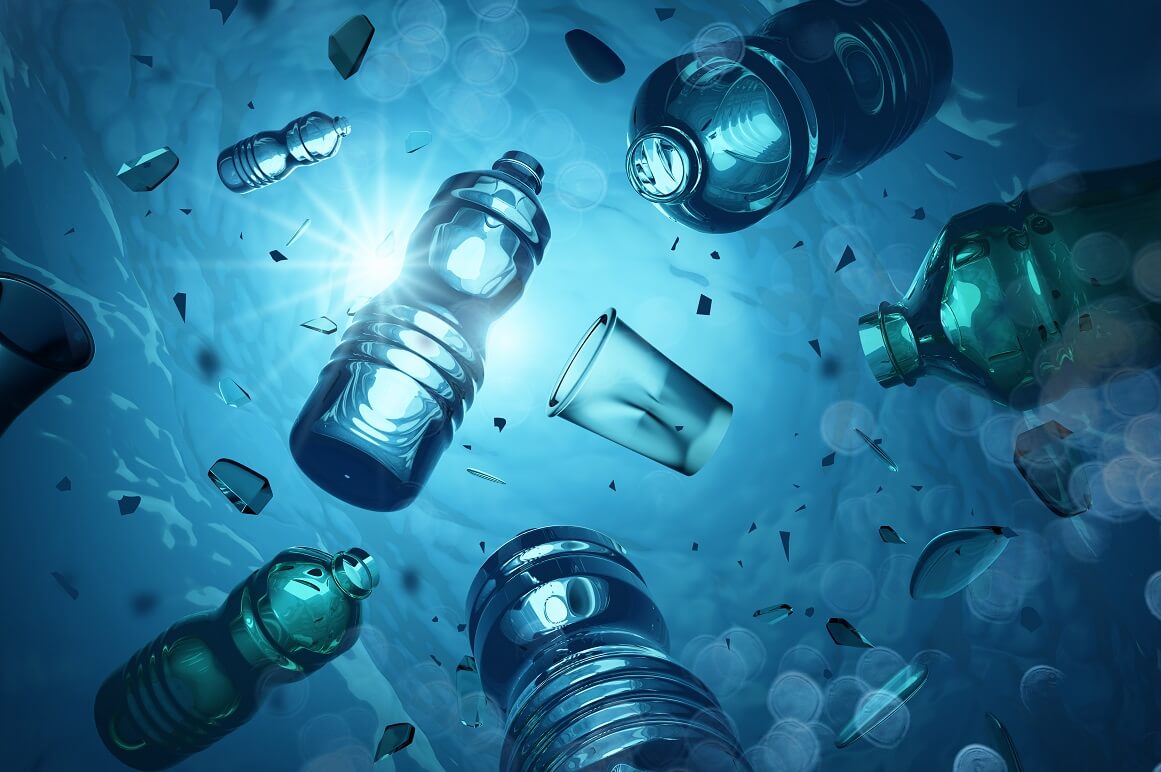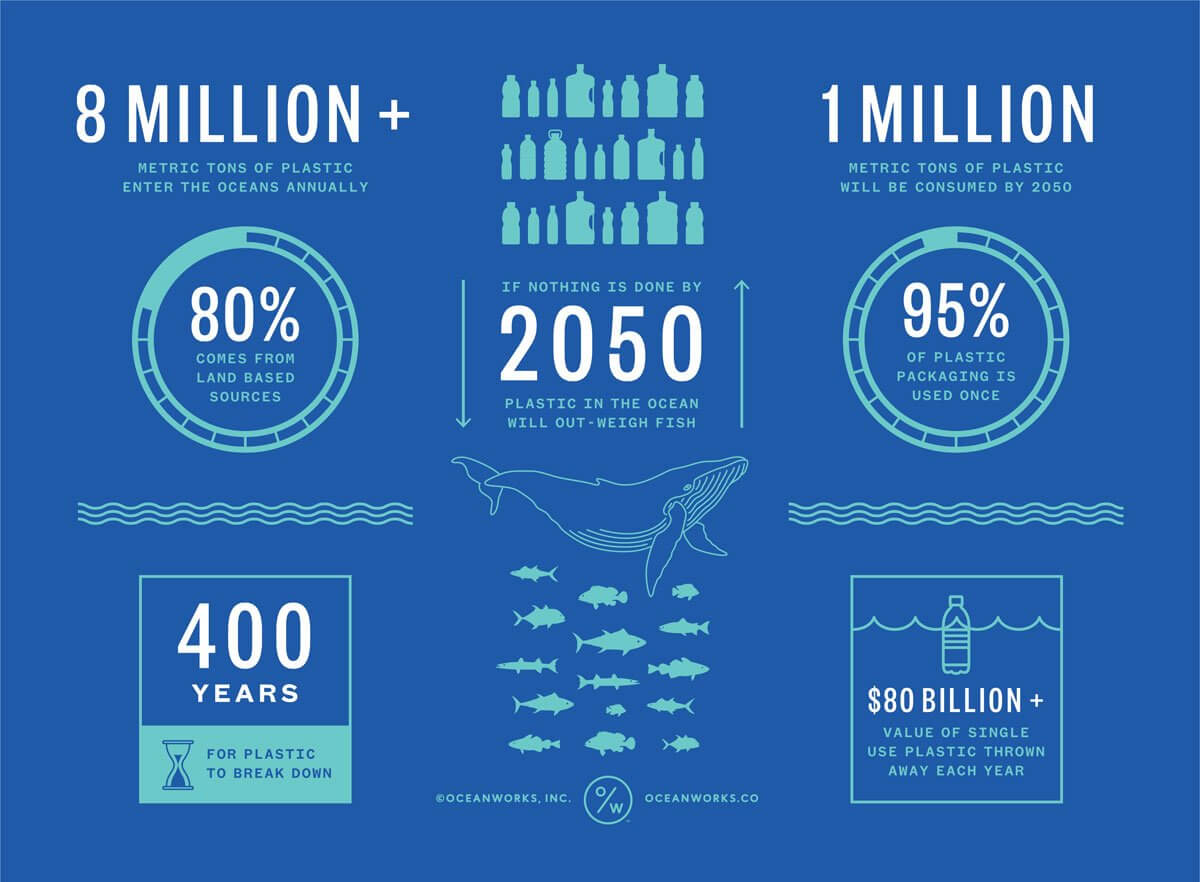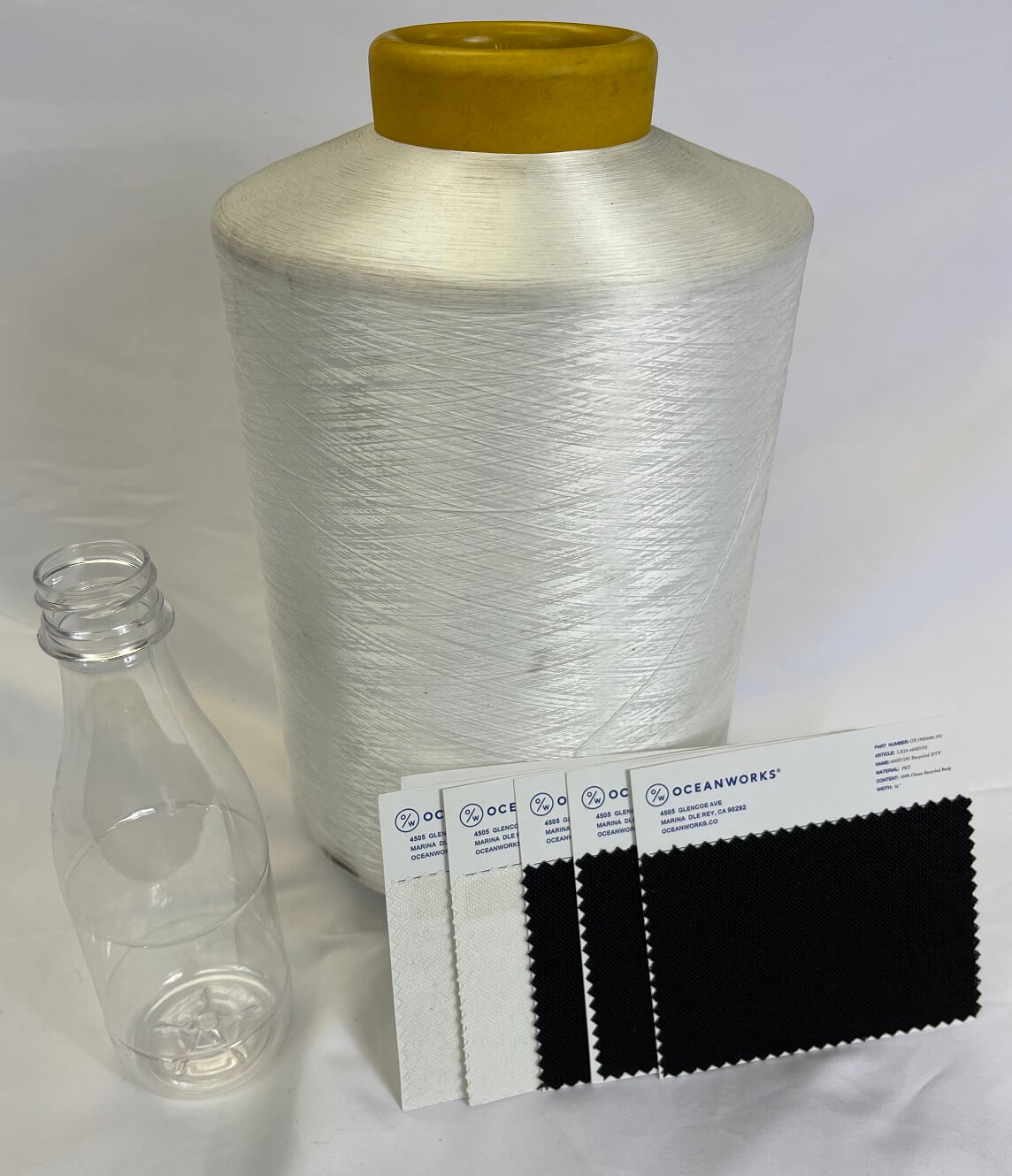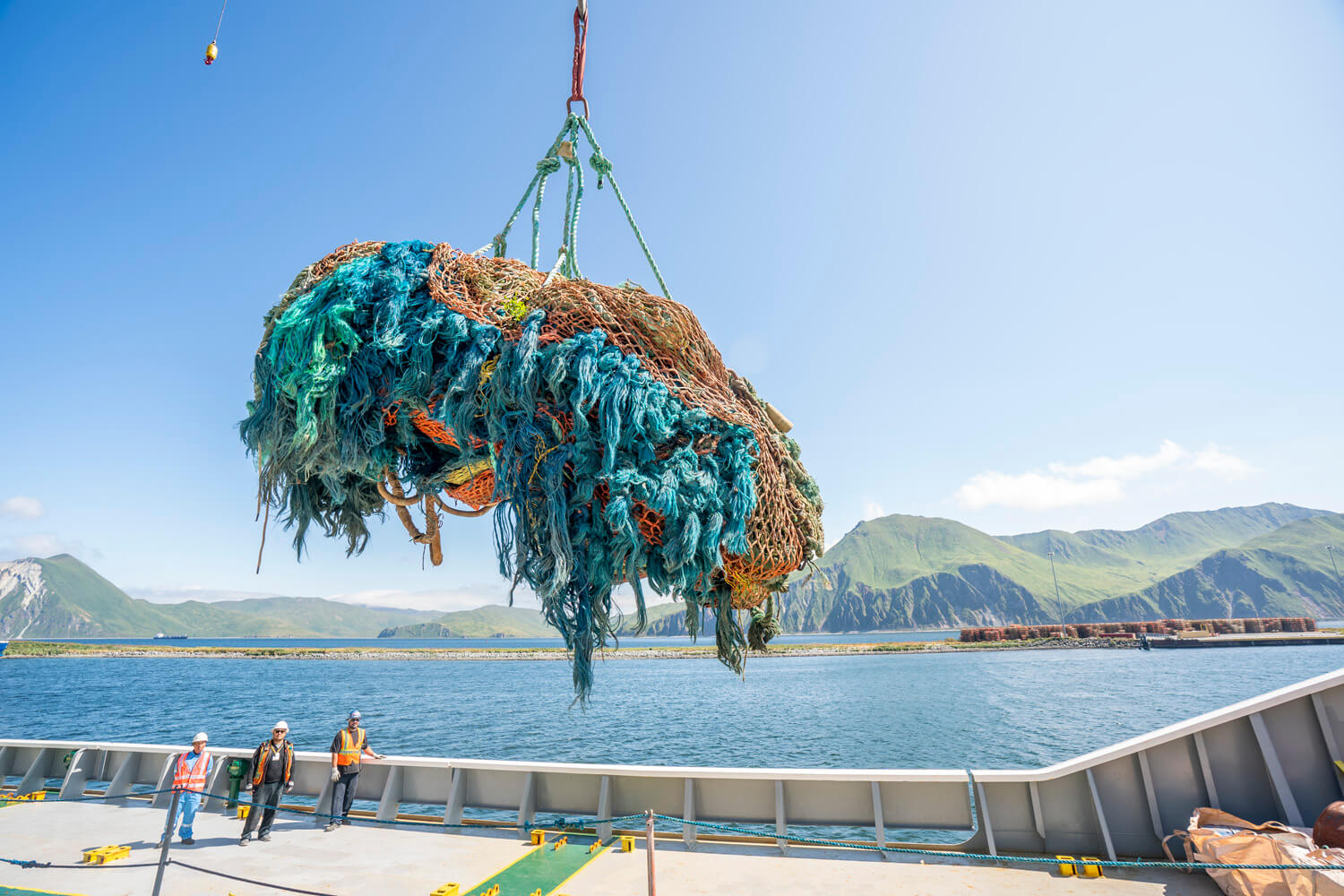Without a doubt, durable, affordable plastics have changed the way we live and helped us live longer. Anyone who has visited a hospital has seen this impact firsthand: medical tools and devices, gloves, syringes, IV tubes and many other life-saving products are used with almost every patient!
Unfortunately, plastics also present a challenge to the world’s oceans as more and more trash is generated, especially with single-use disposable products like straws and bottles. Not all communities have a recycling stream or even a waste stream that keeps plastics away from the beaches and out of our waterways and oceans.

Just how serious is the problem? Here are some facts about plastic waste:
- 8 million metric tons of plastic enters the world’s oceans annually
- 80% of this comes from land-based sources
- If nothing is done by 2050, plastic in the ocean will outweigh fish

The numbers may seem staggering, but together, we can help turn it around. All of us have a responsibility to help solve this problem, and there are many things we can do to contribute individually and collectively. By now, everyone knows the three Rs:
- Reduce: This comes first for a reason. When we consume less, less plastic enters the waste stream.
- Reuse: Limiting disposable, single-use plastics means less ends up in landfills and waterways.
- Recycle: Purchasing recyclable packaging and products gives plastic waste a second chance to become useful again. You can also purchase products made from recycled plastic!
Products Made Out of Recycled Ocean Plastics
Manufacturing with recycled ocean products is a relatively recent development. Collection of the material has grown, and plastic compounders have learned how to clean and reuse it. We expect more and more products to be introduced using these materials. Some well-known products many people use every day include:
- Liners for garbage cans
- Fabrics and clothing
- Spray bottles for cleaners
One commonly recycled plastic is PET (polyethylene terephthalate), and the largest source of this material is plastic bottles. PET bottles do not have to become waste. When disposed of properly, they are highly recyclable and have the potential to be reused many times. Plastic PET bottles should have a 360-degree life cycle.
A bottle’s recycling journey begins with you. It is:
- Used – enjoy a beverage!
- Collected in a recycling bin
- Separated from other types of recycled material
- Transported to a plastic compounding facility
- Processed – ground up and cleaned
- Reformed – molded or extruded into new bottles
- Re-used – enjoy another beverage!
Of course, there are many other uses of recycled plastics besides bottles.
- Clothing – Recycled PET flakes are extruded and then drawn into yarn (long filaments) which are then twisted together so that it can be woven or knitted into fabric or webbing. Outdoor retailer Patagonia has been at the forefront of this movement, using plastic bottles for clothing since the early 1990s. Newcomers like Everlane aim to use only recycled plastic in their products.
- Shoes – From soles to uppers, shoes can be made entirely from recycled plastic. Adidas, most famously, started turning ocean waste into sneakers and sportswear as early as 2015.
- Plastic forks – Some recycled marine materials have been certified food safe. RSP has molded several utensil products including forks from PET material.
- Bags – Several companies have developed cloth bags as well as traditional trash liner bags that are made from recycled marine material.
- Shampoo bottles and other CPG packaging (consumer packaged goods) – Like plastic beverage bottles, shampoo bottles and packaging for other everyday products can be processed into new recyclable bottles and begin the life cycle all over again.

Reducing Waste with Ocean Plastic
How does using recycled material help reduce the amount of plastic in our oceans? There are several ways. First, much of the material used is trash gathered from the ocean, ocean-bound waterways, or nearshore, which would otherwise end up in our seas and rivers. Removing this material directly reduces the amount of plastic in our water.
Second, the growing market for recycled material creates a financial incentive for more entities and organizations to collect and gather material to meet demand rather than use virgin plastic.
Finally, some brands participate in the Oceanworks® Impac+ program. Customers who engage with the brand amplify its impact while reducing their own environmental footprint, a win-win for brands and their followers. Typically, the brand guarantees additional material is removed from the oceans above and beyond the recycled material used in the product.
Next Steps
So what can you do to reduce your own environmental footprint?
First, follow the classic slogan: Reduce, reuse, recycle.
Think about what that really means. Consume less, reuse what you can, and recycle what you can’t. Small changes make a difference. Implement those changes in your everyday life. Educate yourself on the benefits of sustainability. Simple things like not using plastic straws or carrying your own reusable straw all contribute to a healthier world.
Then, make choices in the market that support eco-friendly products. Look for companies that manufacture using Oceanworks® plastics. Do your research on brands that tout sustainability, and look for certifications that ensure companies are making good on their claims.
Finally, get involved in your community. Individual choices matter, but legislative and corporate policies have the potential for large-scale change. Contact your elected officials, and urge companies to do more to lessen their environmental footprint. Use social media or face-to-face interactions to lead by example. Once you understand the contribution and impact you have, you can use your knowledge to help others live more sustainably too.
Want to learn more about how RSP can incorporate recycled ocean plastic into your product?
Laura Parker, “The World’s Plastic Pollution Crisis Explained,” National Geographic, June 7, 2019, https://www.nationalgeographic.com/environment/article/plastic-pollution.
Chris Sharrington, Plastics in the Marine Environment, June 1, 2016, https://www.eunomia.co.uk/reports-tools/plastics-in-the-marine-environment/.
Rebecca Harrington, “By 2050, the Oceans Could Have More Plastic Than Fish,” Business Insider, January 26, 2017, https://www.businessinsider.com/plastic-in-ocean-outweighs-fish-evidence-report-2017-1?op=1.

